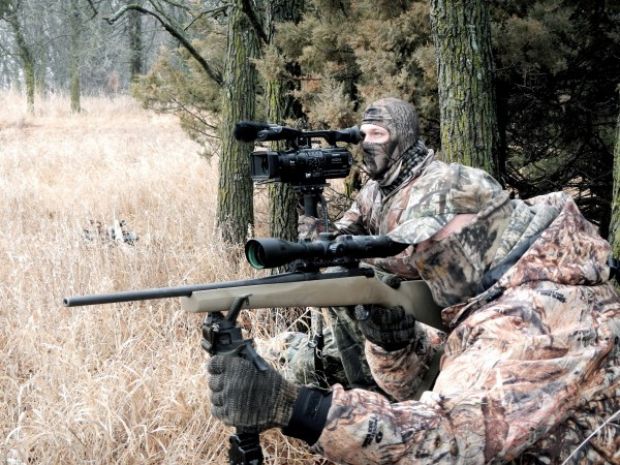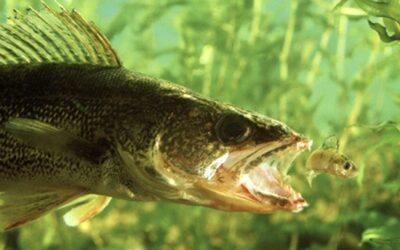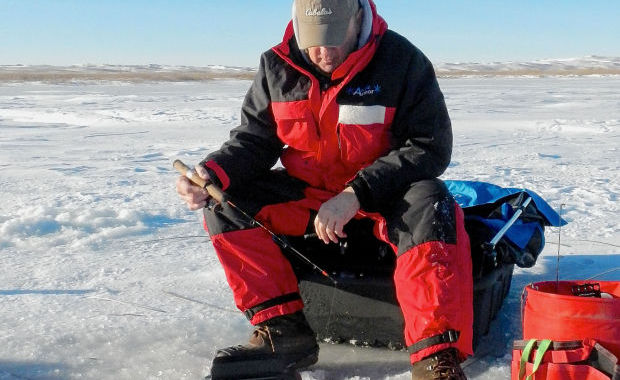This winter, the countryside is covered in the white stuff, snow, which means it is prime time to get out and “take a shot” at calling predators.
No longer can predators, fox and coyotes go almost anywhere to pick up an easy meal as the pastures fence lines and shelterbelts are now covered or buried in snow.
Winter makes it hard for predators to find the critters they eat to build up their energy level and to stay warm during those cold winter nights.
The young not so bright critters, the weak and the old are long since gone, while others have gone into hibernation, so predators in the winter have to work hard and at times travel great distances to find a meal.
Predators like all of Mother Nature’s critters are opportunists, taking the easiest route and taking every opportunity for an easy meal.
When predators hear a distress call or the sound of another animal in trouble, whether it is a bird or fur bearer, they are, going to high tail it to the sound hoping to find whatever is making the noise easy pickings.
Calling Predators isn’t a walk in the park, as predators have keen senses including their sight and sense of smell, which can pick you out before you even get set up to call. Do not get me wrong, you do not need to be a Rhodes Scholar to call predators; you just need to use common sense.
One of those things needed to be successful, is to get into the area you want to call without being seen as the eyes of a predator can spot movement at great distances, so stealth, keeping the noise down and blending in with the terrain you will cross are important.
This is where some sort of camouflage, concealment enters into play. When you are calling in snow covered ground, some sort of snow camo can make or break you. My partners our cameraman and I all don complete camo, and at times, wearing snow ghille suits. Everything we bring into the field where we will set up and call, including our rifles, shotguns, clothing, stocking caps, and facemasks match the terrain.
In northeast Nebraska, where we do much of our calling, there is an over abundance of Cedar trees we can back into when we call.
This means, we will be setting on the ground in the snow while our backs are against the Cedars and when we hunt this way why we wear dark clothing above the waist and snow camo below!
You do not need expensive camo to call predators during the winter as something as simple as an old white sheet can do the job. If you are hunting in open ground, you can cut a slot in the sheet, pull it over your head and wear it like a Mexican serape or poncho.
Because setting on the cold ground will break your concentration causing you to readjust to get comfortable and to prevent our bottoms from freezing off, we set on camo seat cushions or the short camouflaged collapsible Bass Pro Shop Red Head turkey hunting chairs we use when hunting turkeys in the spring.
Next, you may want to a way to keep the predators from picking up your scent. If a predator were to get a whiff of human scent, unless they are desperate or ill will head for the next county as far away their legs can carry them.
To sniff out and make sure that it is a wounded animal that making the racket, they will circle downwind using their sense of smell to sniff out the noisemaker.
As with any type of hunting, we use the wind to our advantage, calling with the wind in our face, which works fine until the critter circles around you. In order to disguise or cover our scent, we like to use some sort of cover scent, the same sort of thing you would use when deer hunting, a spray or scent wafer that smells like something in the area we are calling. For the counties we call in, a cedar scent works well.
Earlier I mentioned not only having a rifle along when calling, as now, we also carry a shotgun into the field with us, which may sound strange to some, as many people believe shots at predators are taken at long distances.
This is not necessarily, so as if you are well camouflaged, your scent controlled and are setting still, coyotes can pop up anywhere, at times so close your scoped rifle just will not work.
On one trip last season, Team Outdoorsmen Adventures Members Larry Myhre, Bill Christensen and I were backed up into some Cedars calling out across an open area. All three of us were carrying scoped rifles when a huge coyote popped out of a ravine slowly made its way from out behind a Cedar tree and was looking Bill and I straight in the eyes just ten feet away.
In order to bring our rifles up to get a shot, we needed to move, to shoulder our rifles and if our movement did not spook the coyote, all we would pick up in our scopes would be hair. After that encounter, one of us, carried shotgun loaded up with Hornady Heavy Magnum Coyote Nickel Plated BB loads and if it happens, again we will be ready.
For calls, we use a combination of both mouth and electronic calls, using the old change up going from one to another. Many predator callers rely on the dying rabbit mouth call, which in some areas has been used and abused, educating many of the coyotes and fox in the area. We still use that call from time to time, but switch to our ICOtec GC 500 electronic call with its twenty-four high quality calls.
Depending on the area, we are calling and the time of the season, we may use the ICOtec GC 500 fawn distress, woodpecker distress, the call of a female coyote or the coyote yip/howl to bring them in. Another nice thing about the ICOtec calls is their decoys, their AD 400 decoy attaches to the call and is controlled from the digital hand held remote unit.
It comes with two different decoy tops one resembling a rabbit while the other a woodpecker and can be turned on and off from the digital remote unit where the decoy top will spin, stop, start again turning off and on.
The movement of the decoys keeps the predator’s keen eyes from spotting the us, giving us an opportunity to move, allowing our shooters to bring our rifle or shotgun up to zero in on coyote or fox heading towards our decoy.
In the winter, the time of the year, we are forced to stay indoors, when cabin fever will set in and being cooped up is about to drive you crazy there is a cure and it is predator calling.
This sport, allows outdoorsmen and women another opportunity to get out of the house, to extend their shooting season and to whittle away at the predator population, the ones in the spring and summer that would have been beating up on our nesting upland game and waterfowl.





0 Comments